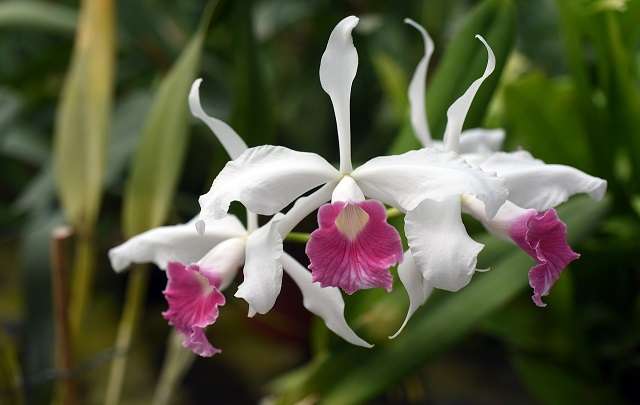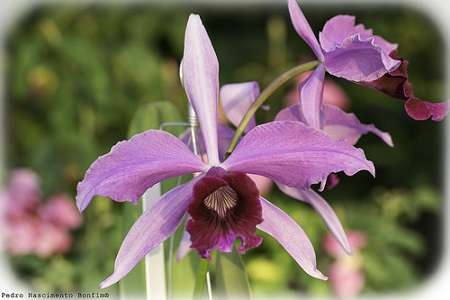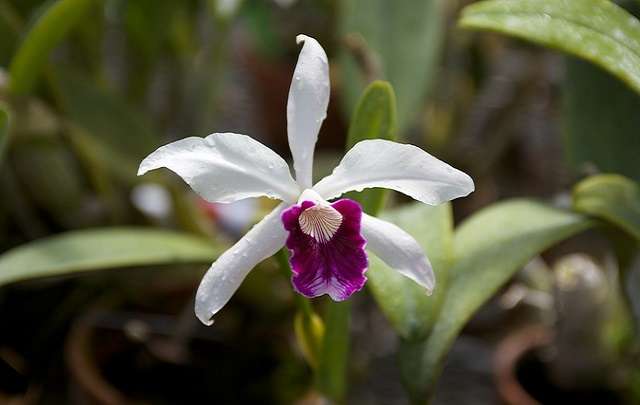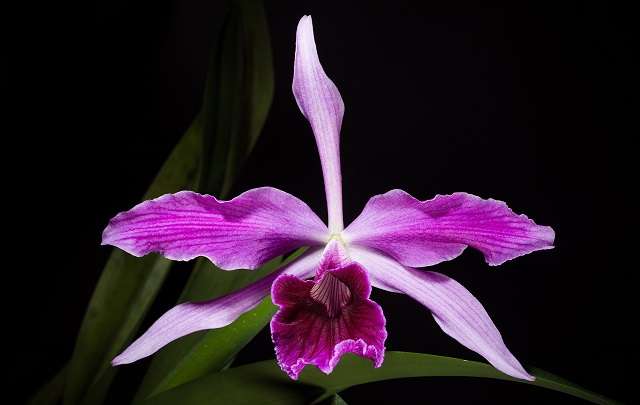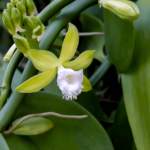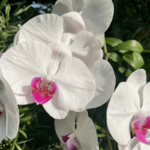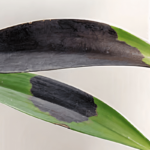The cattleya purpurata is undoubtedly one of nature’s most beautiful orchids.
Highly cultivated throughout Brazil, this plant is easily found in orchid exhibitions.
If you want to learn more about it and how to cultivate it, keep reading.
Learn How to Achieve Super Blooms on Your Orchids
🛑 If you love orchids and you're tired of not being able to make them bloom...
Then, know that thousands of beginner growers are achieving beautiful flowers on their orchids by following this method.
Click the button below to have beautiful orchids with show-worthy flowers every year. ⤵
Characteristics
Also known as laelia purpurata, this orchid was described in 1852 by the famous botanist Lindley.
Lindley was responsible for describing several species of orchids from South America.
Here are some characteristics and curiosities about this plant:
- It is currently considered the symbolic flower of the state of Santa Catarina.
- They reach an average height of 60 cm (23,62 inches).
- It is an epiphytic orchid.
The cattleya purpurata is widely cultivated in the south and southeast of Brazil, as it thrives in colder environments with high humidity.
Flowers
Like virtually all orchids, this cattleya gained prominence in Brazil and around the world thanks to its flowers.
They have very large flowers, ranging from 6.5 to 13 cm (2,55 to 6,11 inches) in length.
But that’s not all about the beauty of this flower. Additionally:
- It comes in a wide variety of colors.
- Its flowers last an average of 10 to 15 days.
- Its flowers are fragrant.
Thanks to these and other characteristics, the cattleya purpurata gained worldwide attention after being collected by the Frenchman Devos in Florianópolis in 1846.
In 1938, this orchid gained great prominence in one of Brazil’s first orchidophilic societies (AJAO).
These orchid exhibitions are usually held in November, at the end of spring, as this is when the purpuratas begin to bloom.
See also:
- How to Make an Orchid Bloom [Beginner’s Guide]
- Ludisia the Jewel Orchid – How to Care in 7 Simple Steps
- Cooktown Orchid (Dendrobium bigibbum): Care & Curiosities
- Monkey Face Orchid – Photos, Curiosities and Much More
Cultivation of Cattleya Purpurata
To learn how to care for orchids, the first step is to determine where you live and choose the ideal orchid for you.
Basically:
- If you live in hot regions, choose orchids that like heat.
- If you live in cold regions, choose orchids that like cold.
This way, you will make your cultivation much easier.
In the case of cattleya purpurata, it thrives in colder environments, so cultivating it in warmer regions is a bit complicated.
See the tips below and learn how to cultivate this orchid:
Lighting and Ventilation
Lighting is the factor that most influences orchid flowering.
Therefore, if you want to ensure that your cattleya purpurata blooms, you must provide adequate lighting.
This is an orchid that loves plenty of light, especially in the morning.
But be very careful.
Avoid direct sunlight as much as possible, especially during its peak hours (09:00 to 17:00).
Therefore, place it in a well-lit location, but with indirect lighting.
A tip: in the article spots on orchid leaves, we teach how to identify when your orchid is receiving too much or too little sun.
As for ventilation, just place it in an open and ventilated place.
Humidity and Watering
These are two very similar but different factors.
The cattleya purpurata likes high humidity and regular watering.
Basically, you will water your orchid just before its substrate dries out.
To check its substrate, follow these steps:
- Stick your finger in the middle of the substrate.
- Check if the humidity is still high.
Watering should be done when the substrate is almost dry, so be careful not to overdo it and water your orchid excessively.
Excessive watering causes the roots of your cattleya to rot.
NOTE: during this orchid’s rest period (shortly before flowering), watering should be reduced, meaning water only when the substrate dries out.
Fertilization
Hybrid between cattleya purpurata and brassavola
Fertilization is one of the biggest challenges faced by beginner cultivators when growing their orchids.
Basically, to fertilize your cat. purpurata, you have two options:
- Natural fertilizers
- Chemical fertilizers
Natural fertilizers are those derived from nature, such as Bokashi.
Chemical fertilizers are man-made, they are usually more efficient and faster, but you have to be careful not to overdo it.
In chemical fertilization, we recommend that you use the following formulations:
- NPK 4 14 8 (a few months before flowering)
- NPK 10 10 10 (during the other months)
Be very careful with excess, and if necessary, halve the dosage.
Temperature
There are several factors that prevent your orchid from flowering, and one of them is temperature.
If you do not provide adequate temperature, your orchid will not bloom.
The cattleya purpurata thrives in cooler climates, so its ideal conditions are:
- During the day between 20 to 22ºC (68 to 72ºF), and at night, this temperature should drop.
- Shortly before its flowering, during winter, night temperatures should be between 10 to 12ºC (50°F to 54°F).
Avoid exposing it to very high temperatures, as this can hinder its development.
Do You Want to Learn How To Keep Your Orchids Healthy And Ready to Bloom Every Year?
So, I prepared a complete guide, step by step and illustrated, that will show you:
• The secrets to getting beautiful flowers every year
• How to fight and identify pests and diseases on your orchids
• THE MAGIC SUBSTANCE for orchids and how to use it
• And much, much more.
The great news is that the manual is now available at a super discount!!
But beware, it's only for the first buyers.
Click on MORE INFORMATION below and discover the secrets to show-worthy flowers. 👇
Where to Plant Laelia Purpurata

As mentioned earlier, this is an epiphytic orchid.
Epiphytic orchids are those that live on top of trees, supporting themselves.
Therefore, before finding a place to plant this cattleya, it is extremely important that you know, they cannot be planted in the ground.
Now, see some places where this orchid adapts very well:
- Plastic, ceramic, or cachepots pots
- Wooden logs
- Trees
Just choose the best place for you and start growing them.
NOTE: if you choose a pot, remember that they should be a little tight for your orchids, as very wide pots cause the roots to rot.
Regarding substrates, they should have the following characteristics:
- Good aeration
- Good drainage
Therefore, choose substrates used in epiphytic orchids such as moss, pine bark, charcoal, etc.
Conclusion
Formerly known as Laelia purpurata, this orchid is one of nature’s most beautiful.
If you are looking for an easily cultivated flower with unforgettable beauty, the cattleya purpurata is definitely a great choice.
If you enjoyed getting to know this orchid, you will also like these articles.
- Catasetum Orchids – Main Species and How to Care
- Oncidium (Dancing-lady Orchid) – How to Care in 9 Steps
- Cymbidium (Boat Orchid) Care: A Step-by-Step Guide
Now it’s your turn, help us reach more people with this content, share it on your social networks by clicking on the icons below.

